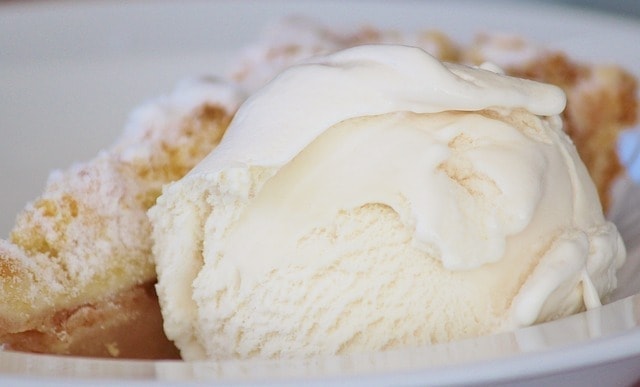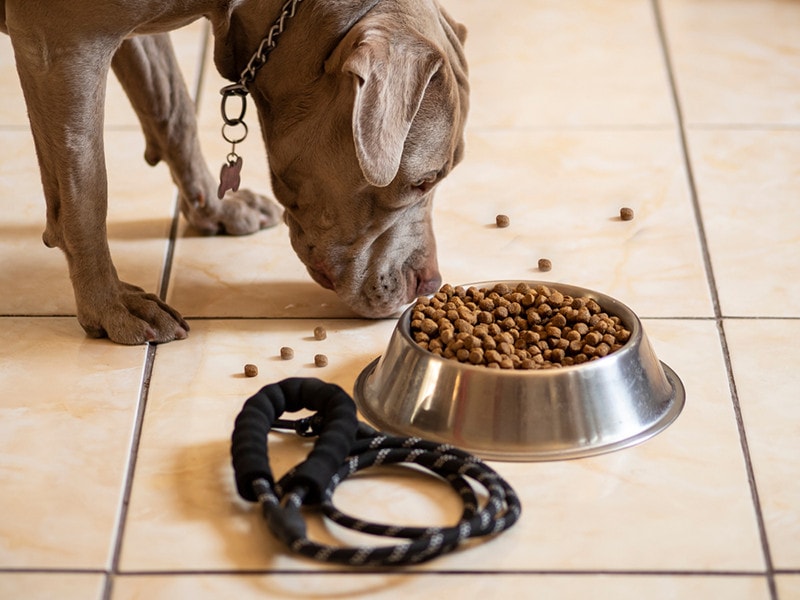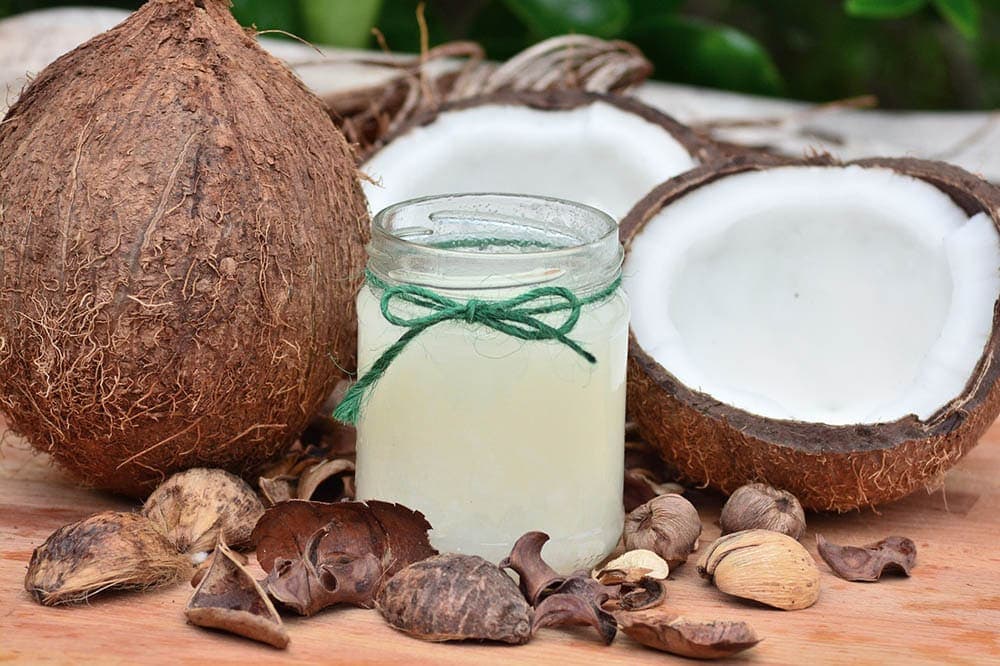Can Dogs Eat Vanilla Ice Cream? Vet-Reviewed Facts & Safety Guide

Updated on

We know that ice cream is delicious, and you want to share all the good things in your life with your dog. We completely understand. However, before you let your pup lick your cone, you should stop and ask yourself whether it’s safe for them to do so. After all, the last thing you want is to cause your dog any health issues because you let them have a taste of something that may be harmful.
So, in order to put your mind at ease, we consulted with one of our in-house veterinarians to determine if it’s okay for you to let your pooch have a little bit of your frozen treat—because there’s absolutely nothing as adorable as a dog licking an ice cream cone.
The answer is a careful yes, as a small lick of vanilla ice cream is unlikely to cause serious health issues for most dogs, as long as there is no xylitol in it, which is toxic for dogs. However, that doesn’t mean they should be eating ice cream, and you really should avoid giving it to your pooch in the first place, as it will not benefit them in the slightest.
Is Vanilla Ice Cream Safe for Dogs?
There are two questions here, and you already know the answer to one.
The first question is—is it safe? The answer is likely yes, in that there’s nothing toxic in vanilla ice cream that could seriously harm your dog if they got a taste. Unless your dog is lactose intolerant, a little bit of ice cream probably won’t hurt them.
However, there’s one huge caveat here: Some ice creams, usually those low in sugar, have artificial sweeteners in them. Some sweeteners, like xylitol, are toxic to dogs and can kill them, so check the ingredients list before offering your mutt your spoon.
Now, there’s also a second question: Should you feed your dog vanilla ice cream? We don’t have to tell you the answer to this. After all, you really shouldn’t be eating it yourself, let alone feeding it to your dog.
We understand the temptation to let your dog have ice cream, and we’ve certainly succumbed to it in the past ourselves. That doesn’t mean it’s a good idea, though.

What Are the Risks of Feeding My Dog Vanilla Ice Cream?
Ice cream is absolutely loaded with sugar, and sugar is bad for dogs. If you regularly give your dog sugary treats, you run the risk of obesity and an array of conditions linked to it, not to mention an upset stomach. You shouldn’t have to worry about either of those if you’re only giving your dog a taste every now and then. Still, it’s certainly not good for them.
However, if you insist on feeding your dog ice cream, vanilla is certainly the best flavor to give. Some flavors—like chocolate, macadamia nut, and coffee—can be quite toxic to dogs, but most pooches should have no issues with vanilla.
Are There Any Health Benefits to Giving Your Dog Vanilla Ice Cream?
Not really. There are a few nutrients in ice cream (like calcium), but they don’t exist in sufficient quantities to counterbalance all the junk. Of course, your dog would likely argue that there are mental health benefits to eating ice cream, but we can’t really speak to that.

Are There Healthy Alternatives to Vanilla Ice Cream for Dogs?
Absolutely. There are a few commercial ice creams designed for dogs; these usually use lactose-free milk and dog-friendly ingredients like peanut butter. However, while these are healthier for your dog than regular ice cream, don’t confuse that with them actually being healthy; they’re still treats and should be given sparingly.
You can also make your own frozen confection at home. The simplest way to do this is to buy plain, unsweetened and lactose-free yogurt and freeze it. We like to fill Kong toys with yogurt and freeze them; your dog will be occupied for hours on a hot day trying to lick all the frozen yogurt out.
Another possibility is to throw a couple of bananas into a food processor and blend them, then freeze the resulting concoction. Once hardened, you’ll have a sweet, completely natural treat that will actually have nutrients in it. You can also mix in peanut butter or yogurt if you like. But make sure such treats are given in moderation and only occasionally due to their high sugar content. Supervise your dog while chewing, as some may be too quick and try to swallow the treat whole, leading to choking or digestive issues, and some dogs may damage their teeth or mouth when chewing on frozen treats.
What Should I Do if My Dog Already Ate Some Ice Cream?
That depends on how much and what kind. If it’s just vanilla ice cream, you shouldn’t have much to worry about beyond an upset stomach and gnarly diarrhea. However, watch out for vomiting, a hunched back, discomfort, reduced appetite, and listlessness, as these will require veterinary attention.
If they ate ice cream with toxic ingredients inside, you’ll need to call your vet or animal poison control—preferably on your cell phone while someone else drives you both to the emergency vet.
What’s the Verdict? Is Vanilla Ice Cream Safe for Dogs?
Vanilla ice cream isn’t toxic for dogs, so there’s no reason to panic if your pooch had a slurp or two. However, it’s certainly not good for them, and you should avoid giving your pup much, if any.
Luckily, there are quick and easy ways to whip up a frozen treat for your dog so you won’t feel guilty about eating a cone in front of them.
See also:
- Can Dogs Eat Custard? Vet-Approved Risks & Alternatives
- Can Dogs Eat Vanilla? Vet-Reviewed Facts & FAQs
Featured image credit: Frantisek_Krejci, Pixabay













